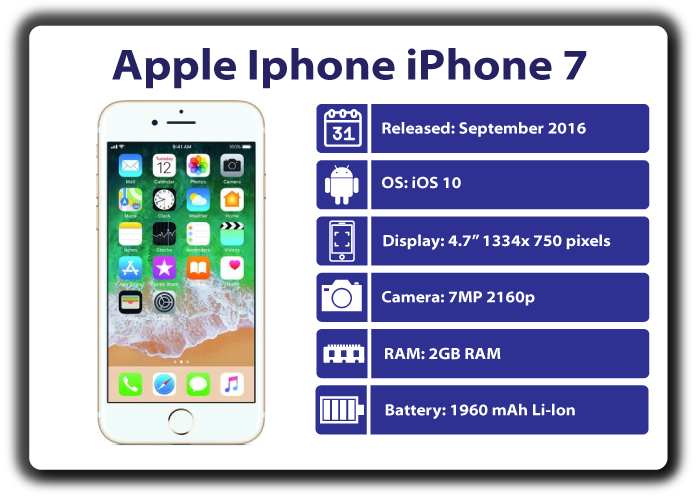Apple introduced the iPhone 7 on September 7, 2016, marking another step forward in the company’s relentless pursuit of innovation. The iPhone 7 built upon the success of its predecessors, bringing notable improvements in performance, design, and features that captivated users worldwide.
iOS and Last Update: The iPhone 7 was launched with iOS 10, Apple’s major update to its mobile operating system. Over its lifespan, the iPhone 7 received several iOS updates, showcasing Apple’s commitment to providing users with the latest features, security patches, and enhancements. As of my last knowledge update in January 2022, the iPhone 7 was still supported by the latest iOS releases available at that time.
Display: The iPhone 7 featured a 4.7-inch Retina HD display with a resolution of 1334 x 750 pixels. While the physical dimensions of the display remained the same as its predecessor, the iPhone 7’s screen saw improvements in color accuracy and brightness. The inclusion of a wider color gamut and the removal of the physical home button in favor of a solid-state, pressure-sensitive Home button contributed to a more vibrant and immersive display experience.
Camera: One of the standout features of the iPhone 7 was its enhanced camera system. The rear-facing 12-megapixel camera was optically stabilized, a feature previously exclusive to the larger Plus models. This stabilization, along with a larger aperture, improved low-light performance and contributed to sharper images. The front-facing FaceTime HD camera received a boost to 7 megapixels, ensuring crisp and detailed selfies. The iPhone 7 also introduced the ability to capture wide color photos and Live Photos, adding an interactive element to still images.
RAM: The iPhone 7 was equipped with 2GB of RAM, which, when combined with Apple’s custom-designed A10 Fusion chip, delivered impressive performance. The A10 Fusion chip featured a quad-core CPU with two high-performance cores and two high-efficiency cores, providing a balance between power and energy efficiency. This architecture contributed to faster app launches, smoother multitasking, and improved overall system responsiveness.
Battery: The non-removable 1960mAh lithium-ion battery in the iPhone 7 was designed to deliver optimal performance throughout the day. While the battery capacity remained similar to its predecessor, the A10 Fusion chip’s energy efficiency and iOS optimizations contributed to improved battery life. The iPhone 7 supported fast charging, allowing users to charge their devices up to 50% in just 30 minutes, providing added convenience for users on the go.
Price (USD): The pricing structure for the iPhone 7 varied based on storage capacity. At its release, the 32GB model was priced at around $649, the 128GB model at approximately $749, and the 256GB model at about $849. As the device aged and newer models were introduced, these prices typically saw reductions, making the iPhone 7 an attractive option for users seeking a balance between performance and affordability.
In conclusion, the iPhone 7 represented a significant leap forward in terms of camera capabilities, performance, and design refinements. Its enduring popularity can be attributed to its reliable performance, continued software support, and the seamless integration of features that enhanced the overall user experience.


